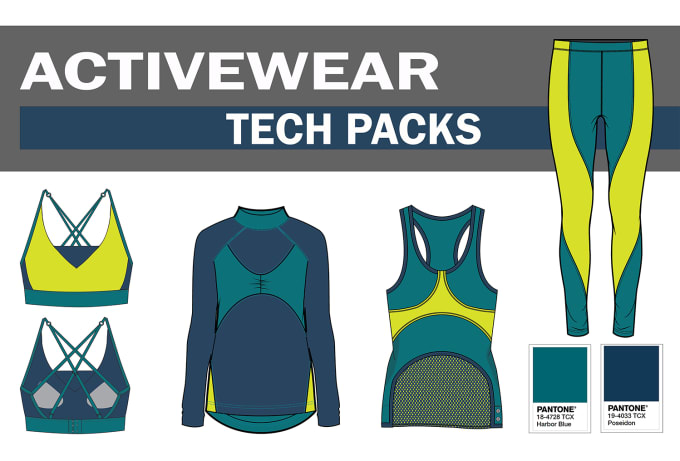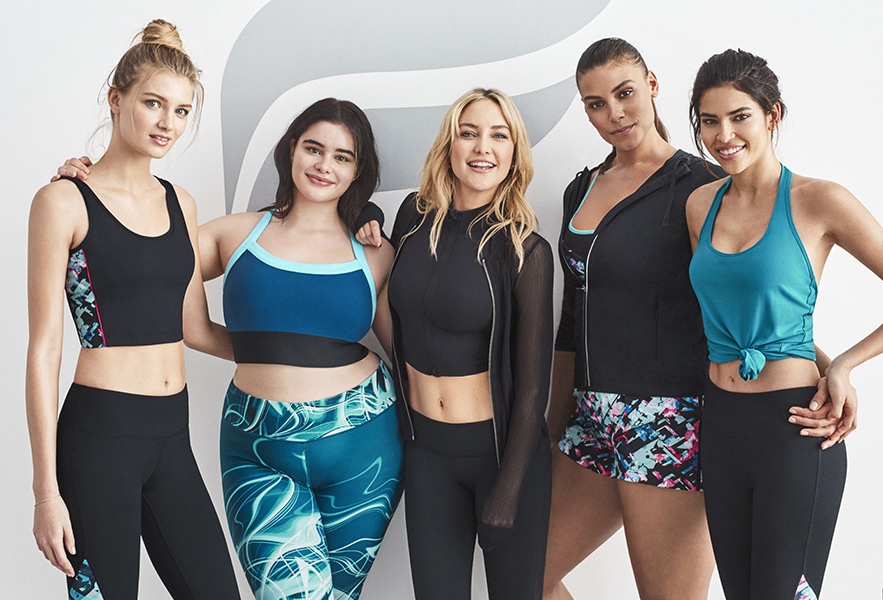Lots of people ask me how to start a sportswear business; the athleisure market has grown massively in recent years and many new entrepreneurs want to take advantage of that. As an experienced sportswear manufacturer manager, I work with a lot of popular fashion sports brands, and lately, it feels like every other request that arrives in my inbox is for a fitness or gym brand. So, I thought I’d write an article on specifics to consider how to start an activewear business.
The general process of starting a sportswear brand is the same as any other clothing product. However, there are some specific considerations for activewear products too, which I’ll cover in this post.
Are we only talking about the cost of the garments or the whole business? We receive about 40 activewear, sportswear, and gym wear inquiries per week (on average). Let me say this now, and this goes for any garment anyone produces, it’s simply the reality:
The less you make a manufacturer guess, the more accurate your initial production costs will be and believe me, you don’t want any surprises. I can’t express my disappointment at how often we receive incoming clients who became fed up with some factory that quoted one thing then jacked up production costs after approvals and payments were made. Your tech pack is your safety net, it removes the need for any guesswork, and clearly indicates every detail the manufacturer needs to provide you with accurate production costs.
Play it safe, this is your business after all. Get detailed spec sheets made for each garment style.
Create Tech Packs Here: TechPacker.com

In fact, there is no single standard production cost for a garment category such as ‘active wear’ because there can literally be hundreds of customizations and fabrics and styles and other factors that impact cost calculations. Production costs will vary and depend entirely on what you want to produce.
So just read on before calculating your budget.
What are now the activewear categories?
With all the glitter and fairy dust lining this exciting market, don’t forget to first carve out your niche. Begin brainstorming and researching where you want to plug your activewear line into is crucial.
Athleisure? High-performing techwear? Aesthetic?
Whichever way you want to identify your brand, build your brand’s DNA and make sure you’ve got all the supporting documents that allow you to design your pieces. For example, if you’re after designing a line focused on performance-wear, you need to have the right approvals and certifications to classify your designs as such.
Activewear styles largely fall into three buckets:
High Impact: Performance-focused activewear with maximum support, flexibility, and of course, comfort.
Medium Impact: Most athleisure brands fall into this category with medium-impact apparel having an average level of support and performance-based capabilities for activities such as weight lifting, boxing, and cycling.
Low Impact: Also classified as athleisure, low impact styles offer little support and best suited for activities like yoga, hiking, Pilates and casual exercise, and even the walk-to-brunch on a Sunday look.
Design and construction elements and considerations
A few basic considerations when you’re outlining the designs of your activewear line:
Fabrication
Consider the type of activity you are designing for and choose fabrics wisely. Typically, moisture-wicking fabrics are a choice selection to minimize odors and keep the wearer feeling fresh
Fit
How much compression your pieces offer matters. Compression offers a variety of benefits such as reduced muscle fatigue, strain prevention, increased power, and movement.
Support
Although primarily governed by the type of material you use, consider how much support your activewear pieces will provide. The level of support coincides with the type of activity you associate your pieces with.
Designing for high-impact activities like running, court, and field sports? High support and anti-bounce sports bras are key.
Consider materials such as Mobile (a transparent elastic tape) used inside bindings near cutouts, armholes, and necklines to provide protection for stitches and avoid them coming apart when stretched. It is also used to ensure body-hugging fit and maintain the supple qualities of the garment.
On the other hand, Power Mesh is used to reducing stretch quality and provide better structural integrity. It is sandwiched in between the fabric layers.
Paneling
Panels in sportswear are specific sections of a piece of clothing targeting key muscle groups you’d expect to be exercise. For example, running shorts have paneling in line with your quadriceps (thighs) as they are your activated muscles during a run. These panels typically have specific fabrication and design elements geared to offer the best support.
Fabric weight (GSM)
Fabric weights depend on the season you’re designing a collection for s well as the type of activity. Sport lines designed for summer have lighter weights whilst colder seasons demand a heavier weight.
Similarly, high-level activities such as running the call for lighter fabrics. A fine balance of the GSM of your fabric also affects the wearability, so consider carefully.
By the same token, fabric weights should also consider body temperature and climate and environmental conditions. For warmer climates, consider cooling fabrics and for cooler climates, vice versa.
Reflective details
Reflexive details aren’t a second thought. As with most of our advice, consider the activity and whether your clothing would benefit from light-reflective stitching and prints.
A night-time cyclist or runner would benefit from bonded stitching. For tops, these reflective details are often found along the arms and the back whilst for shorts and leggings, they’re added to the sides of the shins.
Ventilation
Ventilation plays a big role in blood circulation. Design elements such as cut-outs, mesh paneling, and laser-cut details are found strategically placed by high sweat areas.
Stitching
The type of stitching on the garment matters and it does not only hold the garment together but also offers the most comfort and avoids irritation to the wearer.
Flatlock stitches are typically reserved for compression attire to avoid irritation and discomfort whilst overlock stitching is found on base-layers, tees in knit fabrics to help with stretch and recovery.
Stitching techniques such as the bag out style create stitching that is invisible from both the inside and outside. These types of stitching techniques leave a clean finish. Bonding is another technique used to achieve this.
No matter what type of activewear you design, make sure that the seams can withhold being stretched. Nothing is worse than seeing your activewear double in size (with no come back) after an hour-long workout.

Where can you find good quality fabrics to create an activewear line?
If you are new to the fashion and athletic wear industry, here are some quick tips to help you understand the basics of fabrics:
For close-to-skin garments such as leggings and sports bras, opt for a poly-spandex mix (also known as interlock) and/or power mesh. Poly-spandex mix has a high gauge, providing beneficial give, stretch, and fit. Poly-spandex mixed fabrics also have a high recovery quality and have no show-through (i.e. it passes the squat test). Power mesh fabrics are ideal for sweat-zones as they provide ventilation and aesthetic appeal. Power mesh also offers good stretch and fabric recovery.
For loosely fitted clothing, opt for single jersey polyester, stretchy nylon, and woven fabrics. These fabrics are light-weight and drape well.
Specifically speaking, there are numerous online sources. I have personally used Emma One sock and several others. Mood Fabrics in NYC has nice fabrics and they do include these fabrics. In Oklahoma there is Helen Enox, Dallas has many as well.
What specialist machinery do you need to start a custom activewear line?
Most sportswear styles require specialist machinery. , without which it would not be possible to make perfect samples. Most factories can mock up a sample without the required machinery. But the resulting garment would not be durable or satisfactory.
The two specialist machines that no sportswear factory can be without are the cover stitch machine and the flat stitch machine.
Coverstitch Machine
The cover stitch machine is a bit like an overlocker but without the blade. Some domestic overlock machines are convertible.
But domestic machines are nowhere near as durable as industrial cover stitch machines. The industrial machines are designed to be hammered day in, day out for years. They are immensely durable. The cover stitch machine is designed for use on knit fabrics. It creates a professional hem with a decorative stitch. It has three needles and one looper thread. The looper is underneath and gives the stitch its stretch. On the top is a simple chain stitch.
Knit fabric requires the use of ballpoint needles. For best results, a bulk thread is used for sewing. A cover stitch finish is necessary for performance garments that fit close to the skin and need comfortable seams that do not chafe against the skin. There is also a reverse cover stitch machine. This stitch looks like a flatlock seam but is a little bulkier.
Flatlock Machine
The flatlock machine is used to provide a flat seam for a performance garment. Because the garment fits close to the body the seams need to have as little bulk as possible to reduce chafing. The seam needs to be comfortable, stretchy, and durable. As well as functional it is also decorative. There is just a small seam allowance used for the flatlock seam as the seam is formed by butting two raw edges together with a slight overlap that is cut off as it is sewn with a zig-zag stitch over the top.
A special performance elastic is often used in sportswear in areas that need to stretch and provide stability. Areas like necks, shoulders, armholes, or hems may have this elasticity. Family flat elastic is often used around armholes or necks. This is a narrow elastic that is normally either transparent or white.

COVID-19 Impact: Sportswear Wholesale Supplier for Startups
At the moment, and also in some years of future, there’s always a slight ‘supply and demand’ issue which is making it harder for new brands. Before factories would work really hard to get business, they’d reply on time and answer all of your questions because they wanted to get new clients. Now, they’re often fully booked and are too busy to do this, so if a brand doesn’t come to them with the right information, they’ll either ignore you or worse, take advantage of you. So you need to be prepared with your tech packs, quantities, and timeline before you make contact. This way, they’ll not only know you’re serious (because you’re prepared), but they’ll also know it’ll be harder to take advantage of you (because you’ve already outlined your expectations in a tech pack). At last, as mentioned in the beginning, you can reduce your production cost too, thanks to a tech pack!
Also, keep in mind that you’ll want to look for a supplier who specifically works with sportswear – as I mentioned the construction is often specialized, and therefore so is the equipment. A factory that specializes in something like t-shirts is may not be able to help with a product like leggings because the equipment used is different.
I hope this post has helped you with starting your activewear line. If you’re interested in starting a brand, I’d love to hear from you. You can ask questions in the comments box below, or contact me here, to see how I can help you with your brand, or simply to say hello!
